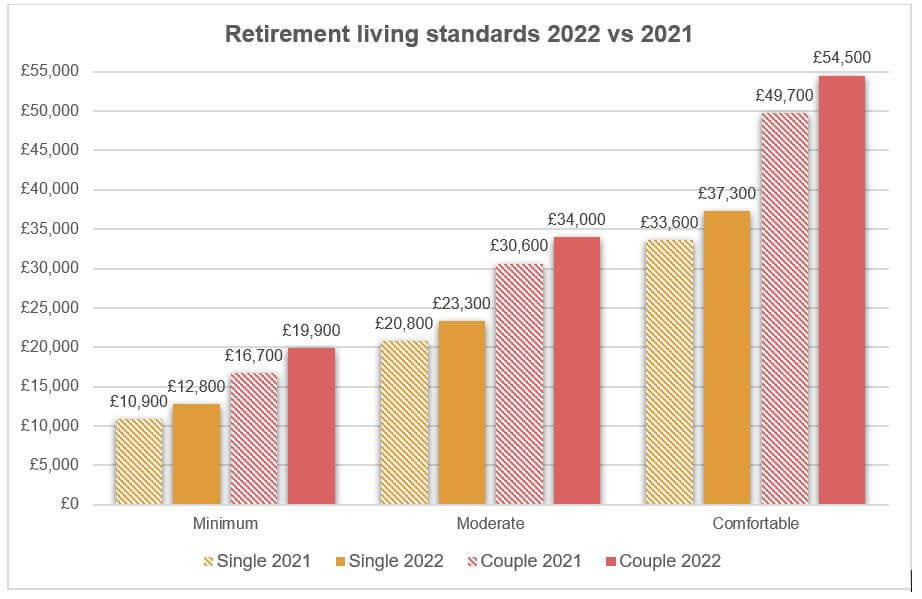How much income do you actually need in retirement? New research shows an increase that might surprise you.
How much income do you actually need in retirement? New research shows an increase that might surprise you.
In 2019, the Pensions and Lifetime Savings Association (PLSA) published research examining how much three different levels of retirement living standards would cost for couples and those living on their own. The three standards were summarised as:
- Minimum: Covers all your needs, with some left over for fun
- Moderate: More financial security and flexibility
- Comfortable: More financial freedom and some luxuries.
To get a sense of the difference across these living standards, the transport category provides a useful benchmark. For a couple, the minimum level assumes no car, the moderate level has one three-year-old car replaced every ten years, while the comfortable pair have two cars, each replaced every five years.
The trio of living standards is updated for changes in spending patterns and the revised costs calculated by Loughborough University. The latest results for people living outside London were published in January, based on April 2022 prices. They showed a sharp rise in the income needed at all three levels, as the graph indicates.

Source: PLSA January 2023
Not all of the rise was due to inflation, which was 9.0% on a CPI basis in April 2022. Some of the higher income requirement was due to revision to the mix of spending that “saw the amount of food included within the budget increasing to bring it into line with the up-to-date nutritional research on a healthy diet”. The disproportionate rise to the minimum figures (18% for singles and 19% for couples) also reflected where spending was concentrated. At the minimum level, 34% was applied to two categories with fast-rising inflation – food and fuel.
Inflation in 2022 has been such that the retirement living standard income levels would need another 5.3% added to them, just to bring them into line the CPI increase from April 2022 to January 2023. State pensions will rise by 10.1% in April 2023, taking the new state pension up to £203.85 a week (£10,600 a year), which will help counter rising retirement costs, but a better comparison is the increase in state pensions in April 2022 – just 3.1%.
If you feel that your future retirement income is not on track to deliver your chosen standard of living, then the sooner you review matters, the better.
Tax treatment varies according to individual circumstances and is subject to change.
The value of your investment and any income from it can go down as well as up and you may not get back the full amount you invested.
Past performance is not a reliable indicator of future performance.
The contents of this article are for information purposes only and do not constitute individual advice.
